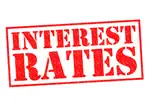- Home
- Tax Compliance Rates
- Payroll Tax Deductions
Payroll Tax Deduction Rates
in the U.S. and Canada
 Neck pain while reviewing payroll tax deductions. Photo 282387481 © Yuri Arcurs | Dreamstime.com
Neck pain while reviewing payroll tax deductions. Photo 282387481 © Yuri Arcurs | Dreamstime.com
by L. Kenway BComm CPB Retired
This is the year you get all your ducks in a row!
Published November 2012 | Edited November 7, 2024
In this chat, I'll answer these two questions:
- What is the employer's and employee's Social Security tax rate for 2026?
- What are the CPP and EI rates for 2026?
Payroll tax deductions are mandatory for small business owners in the U.S. and Canada. If they are giving you "tech" neck, here is a nice short chair sitting routine to ease pain in the neck and shoulders caused by looking at your computer, phone or other screens.
Good To Know
2025 W2 Deadline - Monday, February 2, 2026
2025 T4 Deadline - Monday, March 2, 2026
Turn off your phone for just a few minutes while you browse through these rates. This chart compares key payroll-related terms used in the U.S. and Canada. Where there’s no direct equivalent, the closest concept is shown.
Item |
Canada |
U.S. |
|
Payroll Tax |
Canada Pension Plan (CPP) |
Social Security Tax (SST)* |
|
Medicare |
Provincial Health Insurance** |
Hospital Insurance (HI)* |
|
Unemployment Insurance |
Employment Insurance (EI) |
Federal Unemployment Tax*** |
* SST and HI together are known as FICA ** Provincial health insurance is generally not an employee payroll deduction; some provinces levy employer health/payroll taxes (e.g., ON/BC EHT) ***FUTA
2026 FICA limits were announced in early October 2025 and increased approximately 4.4%. Medicare taxes (2.9%) have no cap on earnings.
A history of FICA & SECA rates from 1937 to present can be found at https://www.ssa.gov/OACT/ProgData/taxRates.html
FICA = Federal Insurance Contributions Act, SECA = Self-Employed Contributions Act
EE = employee's portion of FICA, ER = employer's portion of FICA
| 2026 FICA | EE Rate | ER Rate | EE+ER Rate | Wage Base Limit | Maximum Tax |
|---|---|---|---|---|---|
| Social Security | 6.2% | 6.2% | 12.4% | $184,500 | $11,439 EE $11,439 ER |
| Medicare | 1.45% | 1.45% | 2.9% | None | No limit |
| Additional Medicare Tax (EE only)* | 0.9% | 0% | - | over $200,000 no cap | No limit |
*Note: Employees reconcile Additional Medicare Tax on their income tax return using filing-status thresholds.
FICA (Federal Insurance Contributions Act) establishes two taxes on self-employed workers, employers, and employees.
✔ The first employee payroll tax known as the Social Security tax is for Old Age, Survivors and Disability Insurance (OASDI).
✔ The second employee payroll tax known as the Medicare tax is for Hospital Insurance (HI).
Business owners (YOU) are responsible for:
- Withholding the employee's social security tax from an employee's pay check;
- Calculating the employer's social security tax;
- Remitting the mandatory payroll tax deposit.
- Receive and retain employees’ monthly tip reports (Form 4070 or an equivalent statement) by the 10th of the following month; include reported tips in payroll, withhold and deposit taxes, and report them on Forms 941 and W‑2.
- Submitting your quarterly employer return IRS Form 941.
- File Form 940 annually for FUTA.
5 Payroll Tax Mistakes To Avoid in the States
You may want to read the US Small Business Administration article by Barbara Weltman titled 5 Payroll Tax Mistakes to Avoid. It discusses best protection strategies for:
- Misclassifying workers
["You don’t have the freedom to select the label for the worker; classification depends on whether you have sufficient control over the worker."]
[Editor's Note: Form 1099-MISC referred to in the article is now 1099-NEC for independent contractor income.] - Not using an accountable plan for employee reimbursements
["To be an accountable plan, the employer must formalize the arrangement and set reasonable times for action"] - Failing to keep payroll records
[You should also retain completed Forms I-9, which verify each employee’s identity and authorization to work in the United States.] - Choosing to pay creditors before the IRS
["Best strategy: Set aside cash to cover payroll taxes so you won’t use these funds for any other purpose. "] - Failing to monitor payroll company activities
["Best protection: Monitor your tax account to see that funds are being deposited on time and in the correct amount."]
2026 CPP Rates were released in November 2025. The contribution rate remained at 5.95%. CPP Enhancement, which began implementation on January 1, 2019, was fully implemented by 2025.
Beginning in 2024, a second earnings ceiling was introduced, the Year’s Additional Maximum Pensionable Earnings (YAMPE). The YAMPE is used to determine second additional Canada Pension Plan contributions (CPP2). "In 2024, the YAMPE is approximately 7% above the Year’s Maximum Pensionable Earnings (YMPE). In 2025 and every year after, the YAMPE will be approximately 14% above the YMPE." As a result, pensionable earnings between YMPE and YAMPE are subject to additional contributions (CPP2).
| CPP Rates | 2026 |
|---|---|
| Employee (EE) Contribution Rate CPP1 | 5.95% |
| Employer (ER) Contribution Rate CPP1 | 5.95% |
| Basic Exemption | $3,500 |
| Maximum Pensionable Earnings (YMPE) | $74,600 |
| Maximum Contribution CPP1 | $4,230.45 |
| Maximum Monthly Contribution CPP1 | $352.54 |
| Additional Maximum Pensionable Earnings (YAMPE) | $85,000 |
| Maximum Contribution CPP2 | $416 |
| EE/ER Contribution Rate CPP2 | 4% |
2026 EI Rates were released in mid-September 2025. The mandated 7 year break even objective has resulted in changes to 2026 rates.
| EI Rates | 2026 |
|---|---|
| Employee Contribution Rate | 1.63% |
| Employer Contribution Rate | 2.282% |
| Maximum Insurable Earnings | $68,900 |
| Maximum Contribution | $1,123.07 |
CRA (Canada Revenue Agency) and ESDC (Employment and Social Development Canada) share administration responsibilities of payroll taxes on self-employed individuals, employers, and employees.
✔ Canada Pension Plan (CPP) contributions are shared by employers and employees. Self-employed individuals pay both the employee and employer portions.
✔ Employment Insurance (EI) premiums are shared by employers and employees with oversight by the Canada Employment Insurance Commission (CEIC)/ESDC. Self-employed individuals do not pay EI premiums unless they have opted into the volunteer EI program. Rates are set annually under the EI Act based on the EI Senior Actuary’s 7‑year break‑even rate.
✔ Medical premiums are administered provincially.
5 Payroll Mistakes to Avoid in Canada
- Arbitrarily deducting money
Labour standards often deal with what deductions are not allowed such as uniforms, faulty work or broken equipment, employee mistakes, cash shortages or loss of property under certain circumstance - Not deducting CPP or EI when paying in cash
More >> How To Pay Employees with Cash - Not recording and reporting taxable benefits
More>> Employee Taxable Benefits Rules
Also see CRA Guide T4130 Employers' Guide - Taxable Benefits and Allowances for more information - Treating employees like contractors
More >> CRA Employment Status Determination - Not remitting source deductions on time
More >> Payroll Tax Filing Deadlines
Business owners (YOU) are responsible for:
- Opening a payroll account with CRA;
- Obtaining information from employees through the TD1 Form;
- Withholding the employee's federal CPP contributions, EI premiums and income tax withholdings from an employee's pay cheque;
- Apply provincial/territorial employer health/payroll taxes where applicable (e.g., ON EHT, BC EHT);
- Calculating the employer's share of payroll taxes;
- Remitting the mandatory source deductions via PD7A Form each reporting period (assigned when you open your account with CRA);
- Paying provincially administered workers compensation premiums;
- Issuing T4 and T4A slips annually; and
- Submitting your annual information returns to CRA for T4 and T4A slips issued.






